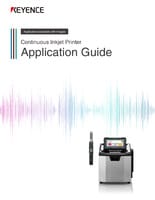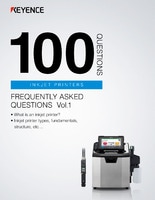Continuous inkjet printer price
When printing expiration dates and lot numbers on cans or packages, the following devices are the go-to options.
- Stampers (Handheld stamps)
- Handheld labeler
- Thermal printer
- Hot printer
- Continuous inkjet printer
This page compares the prices for each of the above options against printing speed and running costs.
Point 1: Printing Speed
In general, the price of printers, including continuous inkjet type is higher than semi-manual marking devices like handheld stamps or handheld labelers. However, the printing speed of a printer is much faster, which allows a substantial increase in manufacturing throughput. This explains why the price of a printer is higher, as the price increases relative to the printing speed.

Advantages of high-speed printing
One of the main advantages from using a continuous inkjet printer is the capability to perform high-speed printing. Expiration dates and lot numbers can be printed on at least 1,000 cans or packages per minute. In addition, using fast-drying ink with a continuous inkjet printer prevents printing flaws or blurring due to contact with wet ink.

Point 2: Running Costs
The following graph compares the main unit price with the cost of expendable items (running cost) generated during printing.

Comparing total costs
It's quite common that the running cost of the printer far exceeds the price of the unit itself. This is particularly true for handheld stamps and handheld labelers. For thermal printers, the ink ribbons are expensive which increase the running cost ratio. On the other hand, the price of continuous inkjet printer is higher, but it offers excellent overall cost performance from lower labor and running costs.

![Learn the Basics of Continuous Inkjet Printers [CIJ Central]](/Images/ss_products_inkjet_header_title_1785688.gif)




![Inkjet Printer Tech Guide [Basic Knowledge Edition]](/img/asset/AS_114378_L.jpg)




